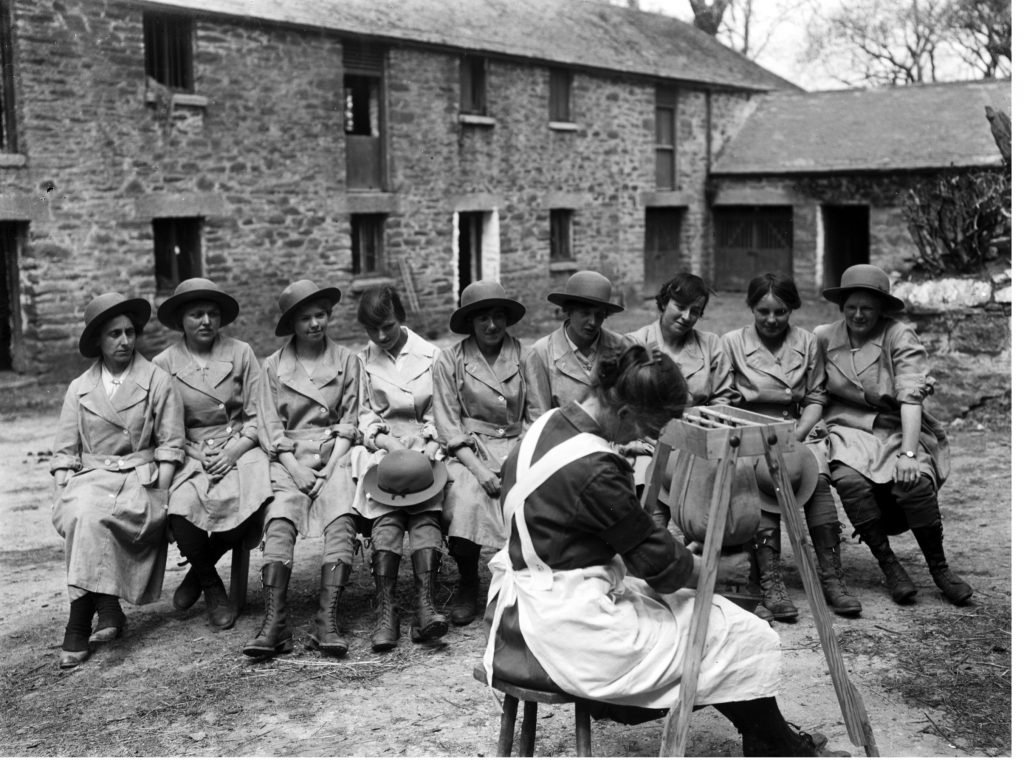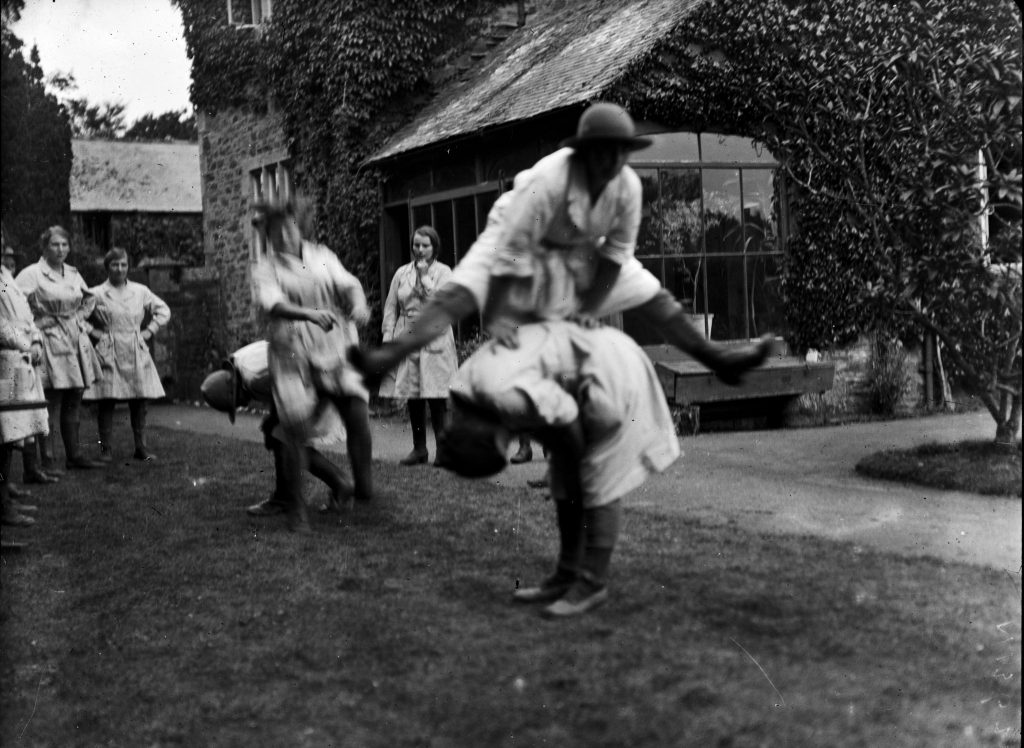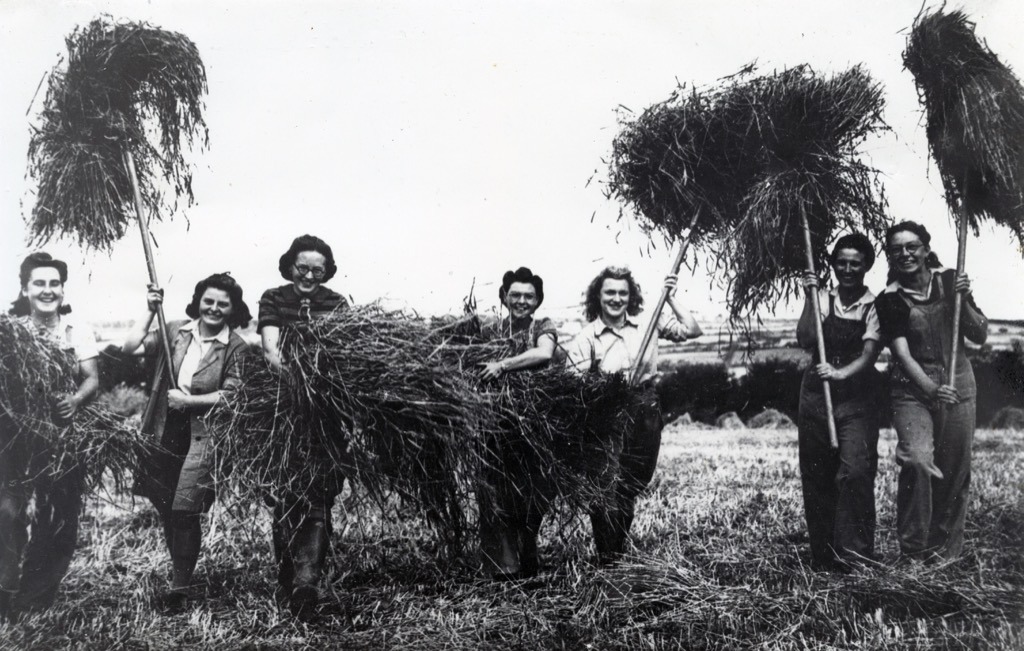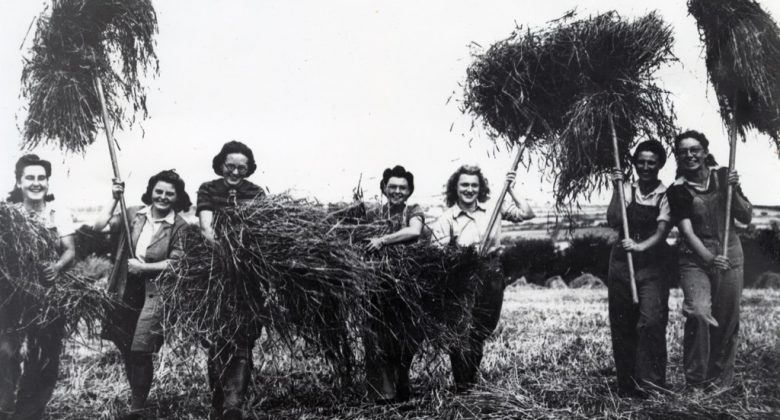To celebrate International Women’s Day, Cherish Watton, founder of www.womenslandarmy.co.uk and PhD student at Churchill College, Cambridge has written this blog. Cherish studies the history of scrapbooks in Britain during the twentieth century.
Links to current events
Last year the government launched ‘Pick for Britain’, an online initiative to recruit British workers to help bring in the harvest. Much of our food is harvested by European workers, who travel to the UK each year. With travel restrictions in place to prevent the spread of Covid-19, the government needed to fill a gap in the labour market.
Senior government figures, journalists, and even Prince Charles compared Pick for Britain to the Women’s Land Army. The work of the Women’s Land Army seems a highly relevant topic to spotlight on International Women’s Day, whose theme this year is ‘Choose to Challenge’.
The Women’s Land Army in the First World War
Initially set up in 1917, the Women’s Land Army recruited over 23,000 civilian women to work on the land to replace men who had gone to war. The majority of Land Girls worked in agriculture, often as milkers and field workers. Other women were employed in the forage section, helping to make hay for horses. Some even worked in the timber cutting section, cutting down trees to increase our supply of timber.
This was the first time the government had recruited women to carry out agricultural work. Wearing breeches often for the first time, women challenged traditional gender roles as they carried out hard, physical labour for the war effort.
Photographic collection of Land Girls in Cornwall during the First World War
The Royal Cornwall Museum has unique collection of over 200 photographs of First World War Land Girls who worked at Tregavethan Farm near Truro. This collection is unparalleled in the quantity and quality of photographs showing First World War Land Girls at work and play.
The photographs capture women learning how to milk, harvest hay, spray pesticide, and fell trees. This visual archive also allows us a glimpse into their free time, whether it be enjoying their lunchbreak, or taking part in a light-hearted game of leapfrog after passing their efficiency tests.



The Women’s Land Army in the Second World War
Twenty years after its disbandment, the government relaunched the Women’s Land Army at the outbreak of the Second World War. Nearly every farming task that had previously fallen to men, who were now drafted into military service, had to be carried out by women. Land Girls tended livestock, ploughed, caught rats, harvested fruit and vegetables, dug ditches, and much more. Recruitment figures from the magazine of the Women’s Land Army ‘The Land Girl,’ tell us that over 1400 Land Girls worked in Cornwall from 1940-1947.

Land Girls harvesting hay in a field at St Erth. Photo credit: Cornish Memory
Stella Hallums was one of these women. Writing in Cornwall WLA Monthly Newsletter in October 1942, Stella reflects on what she had learnt from growing vegetables:
“Getting pots ready for planting tomatoes sounds an easy job, but it is not just a case of putting a bit of earth in a pot, as you might think, but of finding little bits of crocks to fill the hole at the bottom and stop the earth from filtering through; and of sifting the earth…and the constant watering when the plants are on the way to fruiting, putting up wire of the plant to support itself; it all takes time, and of necessity must be done.”
Women quickly had to learn detailed farming tasks, sometimes without any training. Fresh-faced recruits had quite a shock as they adapted to agricultural life.
Researching the Women’s Land Army in Cornwall

Memoirs written by Land Girls who worked in the Women’s Land Army in Cornwall during the Second World War. Photo credit: Cherish Watton
There are several sources to find out more about the work of Cornish Land Girls during the Second World War. Cornish Land Girls have written about their experiences under imaginatively-titled books; such as Ellen Mist’s ‘Aw-Arrh!: Experiences in the Women’s Land Army’, Sonia Kurta’s ‘Charismatic Cows and Beefcake Bulls’, and Joan Mant’s, ‘All Muck Now Medals: Landgirls by Landgirls’. There’s also a fantastic scrapbook-style publication which shares reminiscences from several Land Girls in ‘Digging for Memories: The Women’s Land Army in Cornwall’.
You can visit my website, www.womenslandarmy.co.uk and look at some of the Cornish material, as well as original copies of The Land Girl. If you would like to trace a relative who was in the Women’s Land Army, then take a look at the FAQ page, which offers advice on how best to carry out this research. Finally, I’m developing a self-populated register of First and Second World War Land Girls. If a family member or someone you know worked in the Women’s Land Army or Women’s Timber Corps and you’d like to commemorate their experiences, download and fill in a questionnaire.
‘Cool Grandma’ poetry extract
To bring this blog to a close this International Women’s Day, I want to share an extract from a poem written by Land Girl Hilda Gibson. The poem, entitled ‘Cool Grandma’, shows how women such as Hilda chose to challenge what was expected of them as women during wartime. Hilda poignantly encapsulates what life on the land looked like – and ultimately how she wanted the WLA to remembered by future generations.
Cool Grandma’ written by Hilda Gibson published in ‘Digging for Memories’, p.vii.

